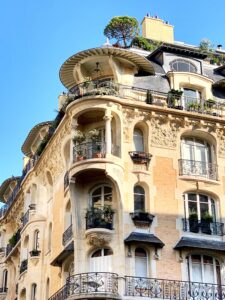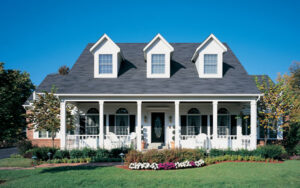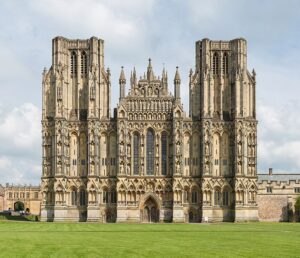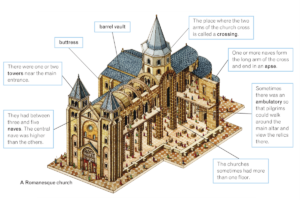History of architecture is the investigation of the development of engineering through the ages and across many geologies and social settings. From the Mesopotamian progress to the Egyptians and Greeks, engineering history is a transnational one. In the accompanying article you will become familiar with various design periods and styles since forever ago.
History of Architecture:-
Generally talking, design has an extended and muddled history that matches the intricacy of mankind’s set of experiences itself. The Neolithic time frame, approximately quite a while back, could be viewed as the start of engineering, or it could simply be the moment when individuals quit residing in caves and started planning their homes. It is not difficult to consider design regarding its visual appeal, yet this longing to build a structural relic was fueled by something other than the requirement for excellence. One of the most charming highlights of design is its capacity to reflect the soul of time in a manner that might be considerably more critical than how we witness it with workmanship. Engineering has demonstrated to be numerous things: agreeable, rich, present day, ruthless, indexical, vernacular. To legitimize the parallelism between engineering history and mankind’s set of experiences, there could be no finer actual proof of society change than design. It is feasible to find out about the historical backdrop of engineering by basically taking a gander at the designs that were inherent various areas at various times. Human activities were reflected in design, and this was put forth more clear by the steady attempt to save a portion of the built history, while choosing to allow the rest to blur and destroy.
Neo-Gothic (1905 AD TO 1930 AD ):-
In the mid twentieth 100 years, archaic Gothic thoughts were applied to present day structures, both confidential homes and the new kind of engineering called high rises.
Gothic Recovery was a Victorian style roused by Gothic churches and other middle age design. Gothic Recovery home plan started in the Unified Realm during the 1700s when Sir Horace Walpole chose to redesign his home, Strawberry Slope. In the mid twentieth 100 years, Gothic Recovery thoughts were applied to present day high rises, which are much of the time called Neo-Gothic.
Neo-Gothic high rises frequently areas of strength for have lines and a feeling of extraordinary level; curved and pointed windows with beautifying mesh; figures of grotesqueness and other middle age carvings; and zeniths.

Art Nouveau (1890 AD TO 1940 AD):-
Known as the Recent fad in France, Craftsmanship Nouveau was first communicated in quite a while and visual computerization.
The style spread to engineering and furniture during the 1890s as a rebel against industrialization directed individuals’ concentration toward the regular structures and individual craftsmanship of Human expression and Specialties Development.
Craftsmanship Nouveau structures frequently have topsy-turvy shapes, curves, and enriching Japanese-like surfaces with bended, plant-like plans and mosaics.
The period is frequently mistaken for Workmanship Deco, which has a completely unique visual look and philosophical beginning.

American Colonial (1600 AD TO 1780 AD):-
Pioneer engineering qualities include: Even front and rectangular shape.
Two stories. A shelter expansion with a saltbox rooftop (essentially where the rooftop toward the rear of the house broadens practically right to the cold earth the state of saltboxes in the time.

Rococo Architecture (1650 AD TO 1790 AD):-
During the last period of the Florid time frame, manufacturers developed elegant white structures with clearing bends
Ornate craftsmanship and engineering is described by rich embellishing plans with scrolls, plants, shell-shapes, and fragile mathematical examples.
Ornate impeccably mirrored the wanton sluggishness and decline of the French Regal Court and High Society.
Dissimilar to other major compositional developments, similar to Romanesque, Gothic or Elaborate, Lavish was truly worried about inside plan.
This was on the grounds that it arose and remained trotted in France, where rich benefactors were reluctant to revamp houses and chateaux, liking rather to rebuild their insides. Also, the style was very unusual and carefree for the outsides of strict and city structures.
Maybe along these lines, in spite of the fact that it spread from France to Germany, where it demonstrated more famous with Catholics than Protestants, it was less generally welcomed in other European nations like Britain, The Low Nations, Spain and even Itally . It was cleared away by the French Upset and by the sterner Neoclassicism which proclaimed a re-visitation of Traditional qualities and styles, more with regards to the Period of Edification and Reason.

Baroque Architecture (1600 AD TO 1830 AD):-
The Elaborate style is reflected in rich and emotional chapels with sporadic shapes and extreme ornamentation.
In France, the profoundly ornamented Florid style joins with Traditional restriction .Russian blue-bloods were dazzled by Versailles in France, and consolidated Elaborate thoughts in the structure of St. Petersburg.
Components of the intricate Extravagant style are found all through Europe . Russian blue-bloods were dazzled by the Royal residence of Versailles, France and consolidated Elaborate thoughts in the structure of St. Petersburg. Components of the intricate Elaborate style are found all through Europe.

Renaissance Architecture (1400 AD TO 1600 AD):-
Funded by business thriving and contest between city-states, like Florence, Rome and Venice, as well as rich families like the Medici banking tradition in Florence and the Fuggers banking family in Germany, the Renaissance was neverthess a victory of will over world occasions. Not some time before, there had been a run of shocking European harvests (1315-19); the Dark Passing disease (1346) which cleared out 33% of the European populace; the 100 Years Battle among Britain and France (1339-1439), and the Christian Church was enraptured by split. Scarcely ideal circumstances for the resurrection or rinacimento that followed. As it was, the sixteenth century Popes in Rome nearly bankrupted the Congregation in the mid sixteenth 100 years because of their degenerate supporting of fine structures and the visual expressions.

Gothic Architecture (1100 AD TO 1450 AD):-
Gothic design started for the most part in France, where planners were enlivened by Romanesque engineering and the sharp curves of Spanish Moorish design.
It advanced from Romanesque engineering and was prevailed by Renaissance design. It’s not difficult to perceive Gothic structures due to their curves, ribbed vaulting, flying braces, elaborate models (like figures of deformity) and stained glass windows. Gothic design was initially known as “French Style”. As a structural style, Gothic grew principally in religious design, and its standards and trademark structures were applied to different sorts of structures. In the twelfth and thirteenth hundreds of years, progresses in designing empowered modelers to plan and finish progressively immense structures.

Byzantine Architecture (AD- 527 and 565):-
When Constantine turned into the Caesar of the Roman domain, the Realm had parted fifty
The Western Roman Domain focused in Rome, speaking Latin
The Eastern Roman Domain of Byzantium (Constantinople), today Istanbul
Byzantium, “New Rome”, was subsequently renamed Constantinople and is currently called Istanbul.
The domain persevered for over a thousand years, decisively impacting Middle age and Renaissance period engineering in Europe and, following the catch of Constantinople by the Ottoman Turks in 1453, driving straightforwardly to the design of the Ottoman Realm. The Eastern Domain, or Byzantine Realm became solid and stable in the 6th hundred years under Ruler Justinian: enduring 1000 years, with an extraordinary social history It tumbled to the Turks in 1453. The boundaries were penetrated and the Head had to forsake Rome, moving the middle toward the north, first to Milan then to Ravenna.
Savages poured out over the remainder of the Roman Realm, Germany, Spain, Italy, Gaul, and Africa. Toward the 6th c’s end. there were many savage realms which supplanted the focal power of the Roman Ruler. Ocean exchange stopped, incredible urban areas were deserted, and Rome contracted. practically every organization of the Public authority stopped, with the exception of one. the Congregation.
Architectural Characteristics:-
Portrayed particularly by enormous vaults with square bases and Engineering adjusted curves and towers and broad utilization of glass mosaics.
Early Byzantine design was worked as a continuation of Roman engineering.
Elaborate float, mechanical progression, and political and regional changes implied that an unmistakable style continuously arose which pervaded specific impacts from the Close to East and involved the Greek cross arrangement in chapel engineering.
Greek cross arrangement in chapel design – A cross with four equivalent arms at right points
Structures expanded in mathematical intricacy, block and mortar were utilized notwithstanding stone in the enhancement of significant public designs, traditional orders were utilized all the more openly, mosaics supplanted GREEK CROSS LATIN CROSS cut enrichment, complex vaults settled upon gigantic wharfs, and windows sifted light through slender sheets of alabaster to enlighten insides delicately.

Romanesque Architecture (500 AD TO 1200 AD):-
Similitudes among Roman and Romanesque incorporate round curves, stone materials, and the basilica-style plan (utilized for mainstream purposes by the Romans).
Impacts that prompted the Romanesque style are undeniably more mind boggling – Romanesque design additionally shows impacts from gothic, Carolingian, Byzantine and Islamic engineering.
The Romanesque time frame can’t be exactly characterized – yet Romanesque engineering by and large dates from 1000 to 1150
Romanesque was at its level between around 1075 and 1125.
Architectural Characteristics:-
Joining elements of contemporary Western Roman and Byzantine structures, Romanesque engineering is known by its enormous quality, its thick walls, round curves, durable wharfs, crotch vaults, huge pinnacles and enriching arcading. Each building has plainly characterized structures and they are habitually of extremely customary, balanced plan so the general appearance is one of effortlessness when contrasted and the Gothic structures that were to follow. The style can be distinguished right across Europe, in spite of provincial attributes and various materials.

Early Christian Architecture (373 AD TO 500 AD):-
The Early Christian engineering began in two conspicuous areas focused at Rome and Constantinople.
The Place of Rome as the focal point of an overall realm was a significant element. Christianity to become general.
The quarry of the remnants of roman structures affected the engineering treatment of the style, both as to development and beautification
Early Christian design at Rome was affected by, and was the consistent result of, existing Roman engineering.
Segments and other structural highlights and marbles from the more established structures were worked into the plan of new Basilicas chapels of the Christians.
Architectural Characteristics:-
With Christianity generally acknowledged as a state religion in Rome it was vital for design to answer the requests of the religion for love space.
Method of love was the main determinant of the type of the congregation
The term early Christian engineering alludes to the design of the early Christian holy places of the roman period
With Christianity acknowledged as a state religion in Rome and extending in impact, it became important for design to answer the space requests of the new religion
The prerequisites include:
1. A way for processional passage and exit of the ministry
2. A special raised area region, where the church celebrate mass
3. A space for the isolation of the ministry from the gathering during parade and fellowship Internment space.

Classical Architecture (850 AD TO 476 AD ):-
Traditional engineering alludes to the style and plan of structures in antiquated Greece and old Rome. Traditional engineering molded our way to deal with working in Western provinces all over the planet.
The period between the ascent of the Greek Domain and the fall of the Roman Realm has in the long run seen the development of a few structures. The main engineering highlight which features this style is the segment put on the façade. The recognizable elements of old style stylish incorporate evenness, extent, reasonable request, the relationship of individual parts to the entire and quiet rationale.
700 to 323 BCE — Greek: The Doric segment was first evolved in Greece and it was utilized for extraordinary sanctuaries, remembering the popular Parthenon for Athens. Straightforward Ionic segments were utilized for more modest sanctuaries and building insides. 323 to 146 BCE — Greek: When Greece was at the level of its power in Europe and Asia, the realm assembled elaborate sanctuaries and common structures with Ionic and Corinthian sections. The Greek time frame finished with victories by the Roman Domain. 44 BCE to 476 CE — Roman: The Romans acquired vigorously from the prior Greek and Greek styles, however their structures were all the more exceptionally ornamented. They utilized Corinthian and composite style sections alongside enhancing sections. The development of cement permitted the Romans to fabricate curves, vaults, and arches. Renowned instances of Roman engineering remember the Roman Colosseum and the Pantheon for Rome. Quite a bit of this old design is in ruins or somewhat revamped. Computer generated reality programs like Romereborn.org endeavor to reproduce the climate of this significant development carefully

Ancient Egyptian Architecture (3500 BCE to 900 AD ):-
This engineering style goes from 3500 BC to 900 Promotion. It portrays the noticeable time of Egyptian engineering.
The Egyptians made the most great designs of the old world. The period saw the development of a portion of the unmistakable pyramids with a few recognizable compositional qualities.
Wood was not broadly accessible in the parched Egyptian scene. Houses in antiquated Egypt were made with blocks of sun-prepared mud.
Flooding of the Nile Stream and the attacks of time obliterated the greater part of these old homes. A lot of what we realize about old Egypt depends on incredible sanctuaries and burial chambers, which were made with stone and limestone and enhanced with hieroglyphics, carvings, and brilliantly shaded frescoes. The old Egyptians didn’t utilize mortar, so the stones were painstakingly sliced to fit together.

Prehistoric Architecture:-
Ancient manufacturers moved earth and stone into mathematical structures, making our earliest human-made developments. People developed earthen hills, stone circles, stone monuments, and designs
Göbekli Tepe in present day Turkey is a genuine illustration of archeological engineering. Before written history, people developed earthen hills, stone circles, stone monuments, and designs that frequently puzzle advanced archeologists. Ancient Engineering Incorporates stupendous designs like Stonehenge, precipice abodes in the Americas, and cover and mud structures.
Many fine instances of all around safeguarded ancient design are tracked down in southern Britain. Stonehenge in Amesbury, Joined Realm is a notable illustration of the ancient stone circle.

Our other social links
other blogs and works


